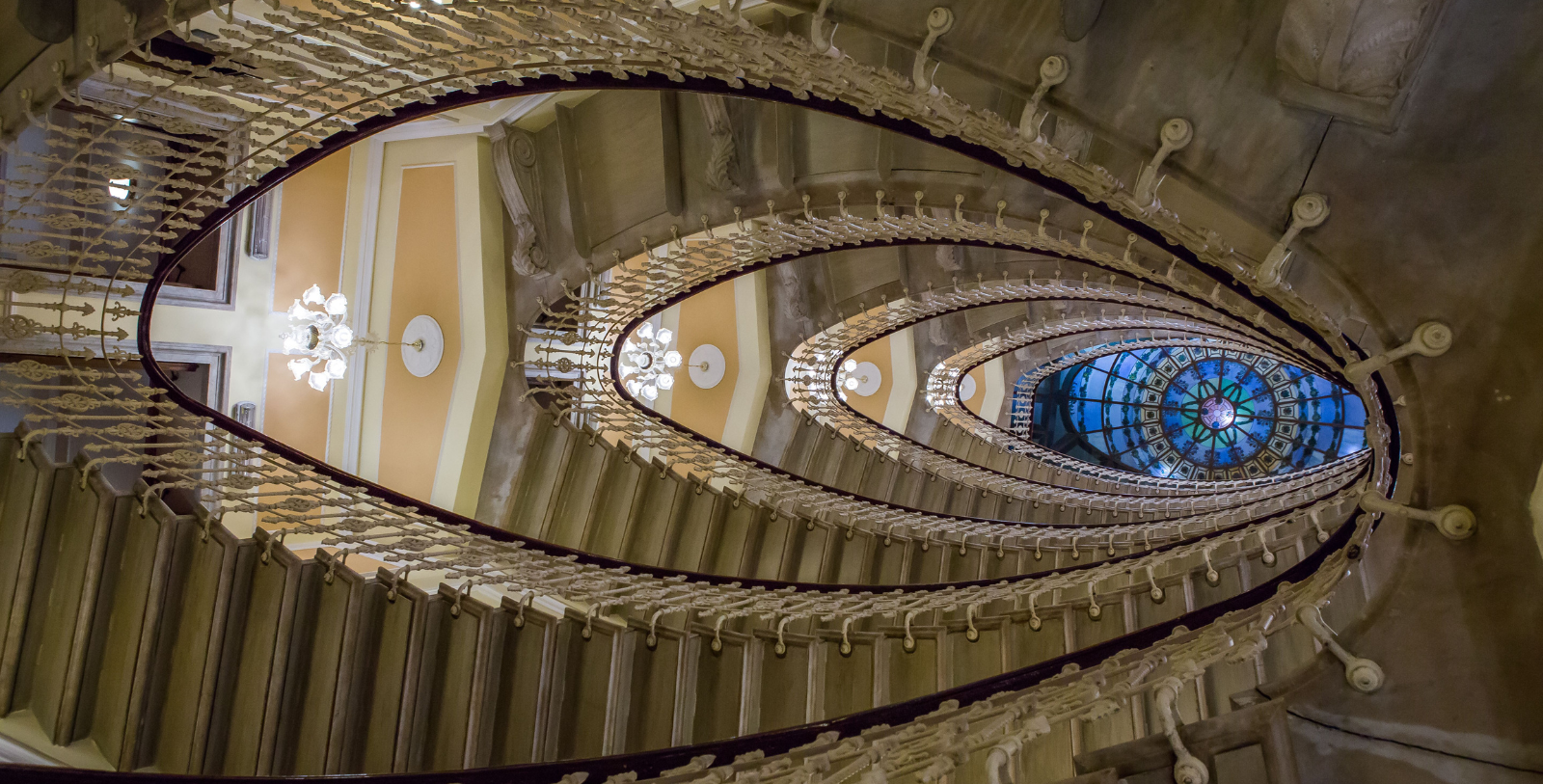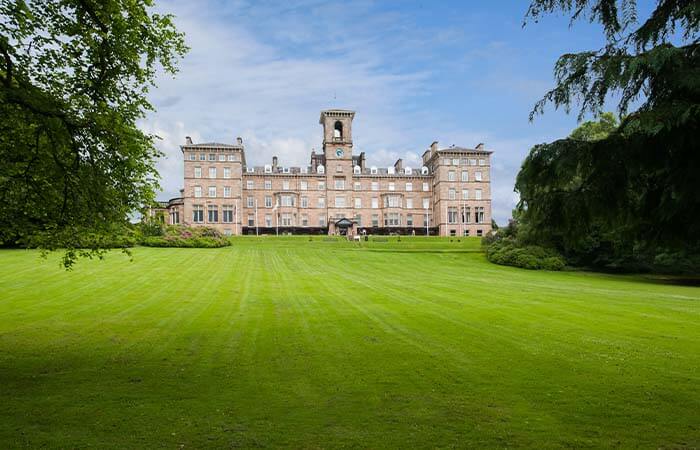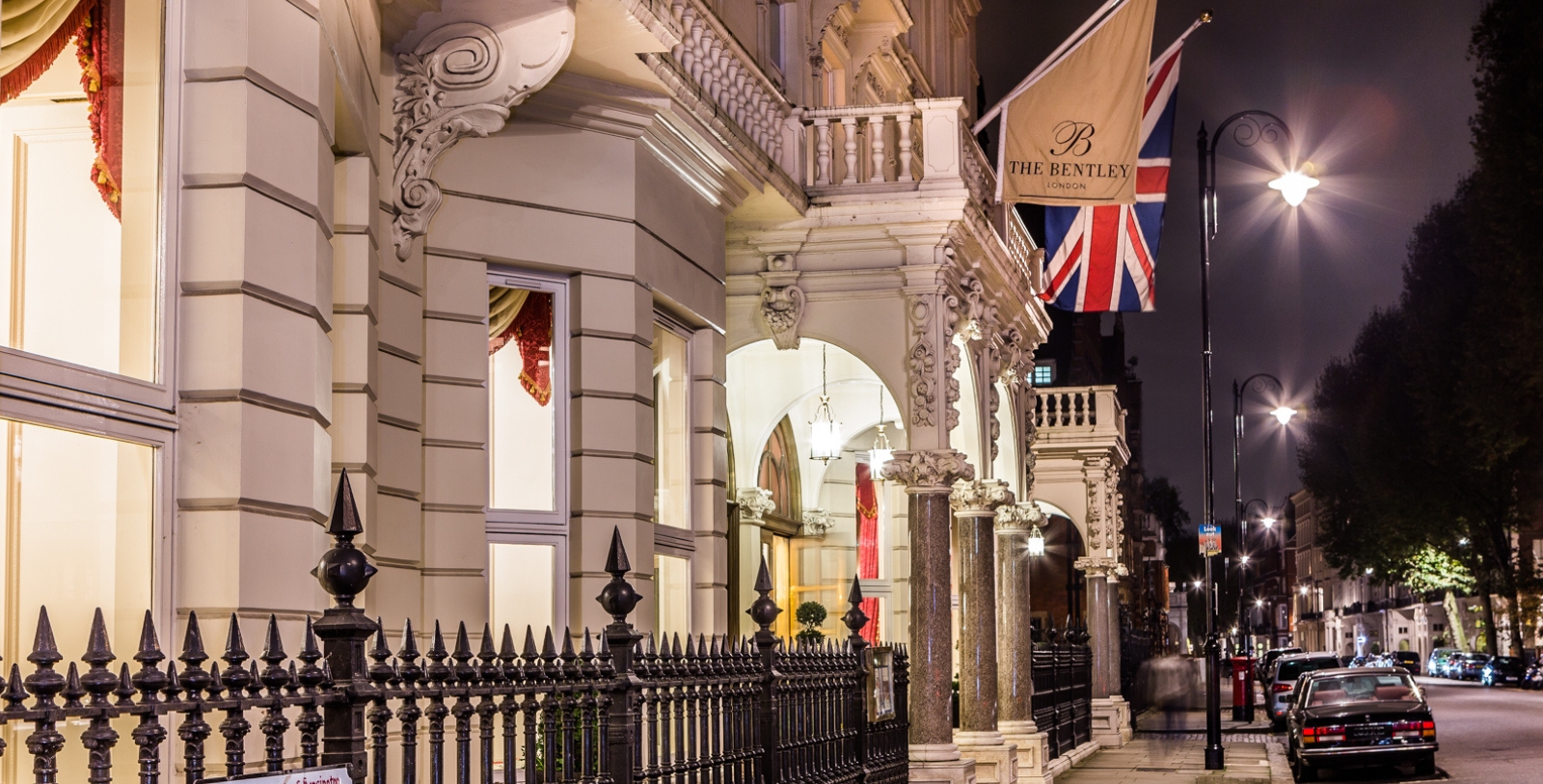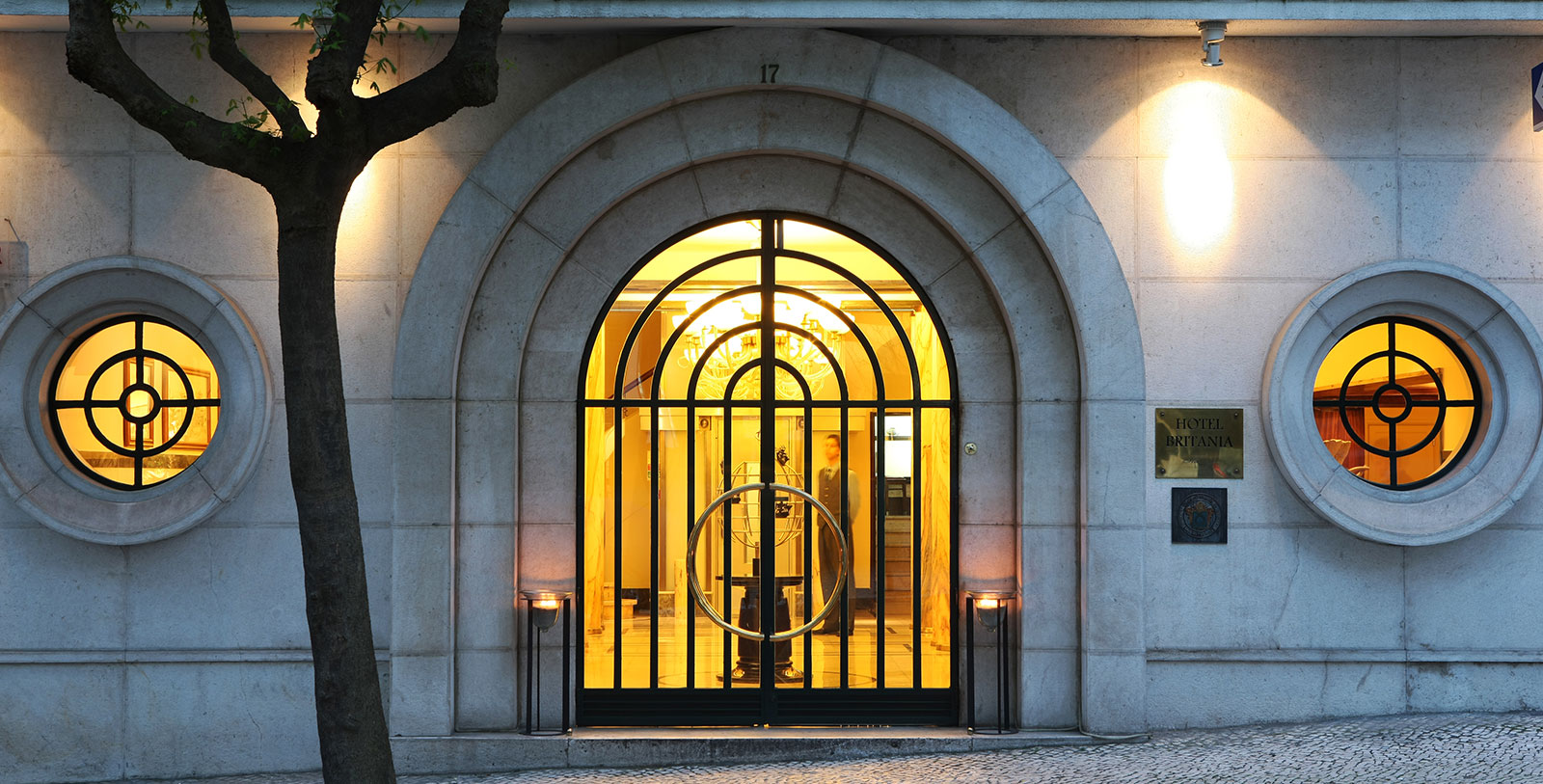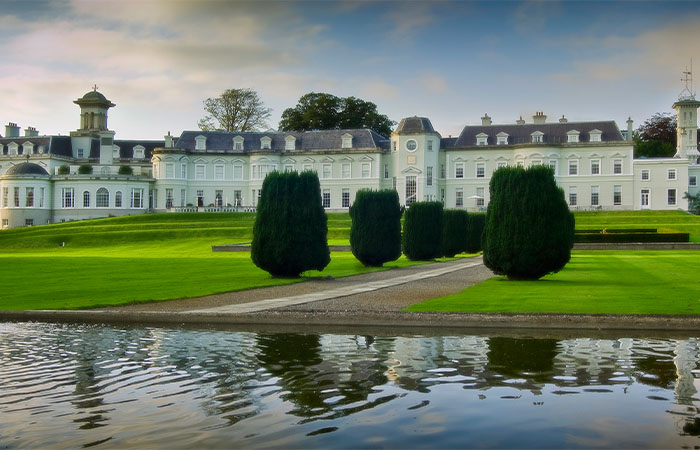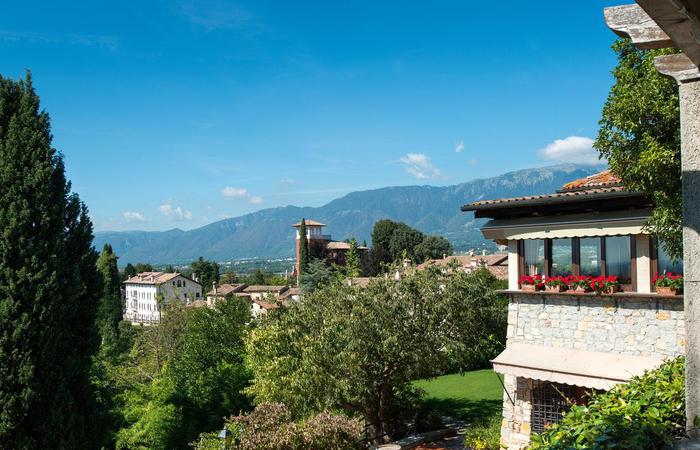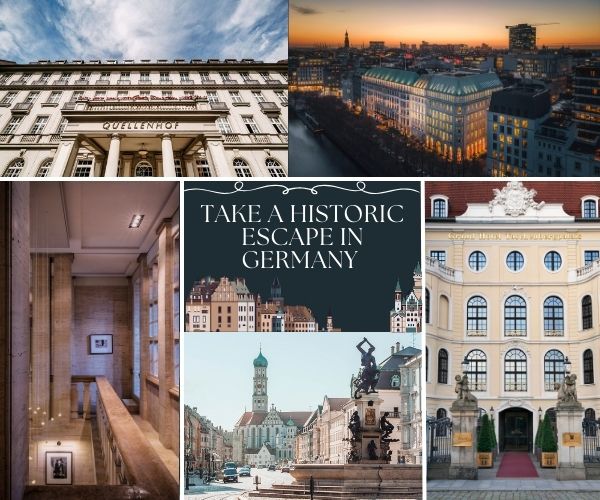Receive for Free - Discover & Explore eNewsletter monthly with advance notice of special offers, packages, and insider savings from 10% - 30% off Best Available Rates at selected hotels.
The 2023 Top 25 Historic Hotels Worldwide Most Magnificent Ceilings and Domes

The 2023 Top 25 Historic Hotels Worldwide
Most Magnificent Ceilings and Domes
Castlemartyr Resort (1210)
County Cork, Ireland
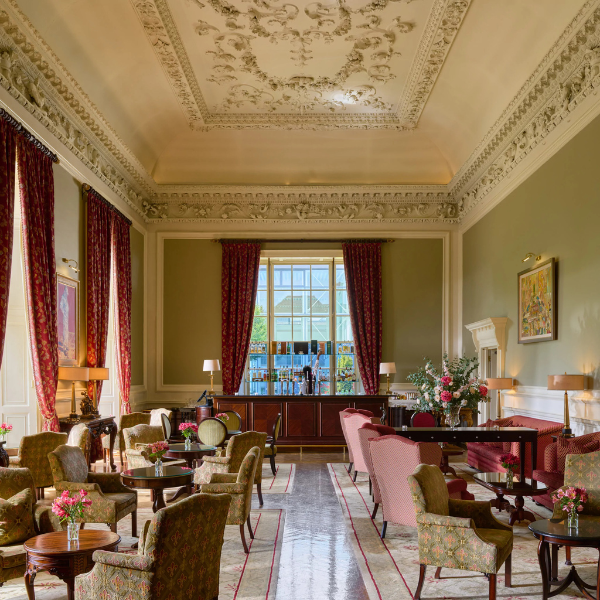 |
At the heart of Castlemartyr Resort’s 18th-century Manor House is the historic Knights Bar. It is aptly named, as the historic castle site at the resort was built by the Knights Templar in 1210. The Knights Bar ceiling showcases a stunning Rococo design installed by the LaFranchini brothers in the 18th century. These Swiss decorators became famous in Ireland for their distinct Rococo stucco ceiling and wall designs that survive in grand mansions throughout Ireland to this day. Rococo style is an exceptionally ornamental and dramatic style of architecture, art, and decoration. It combines asymmetry, scrolling curves, gilding, white and pastel colors, sculpted molding, and trompe-l'œil frescoes to create surprise and drama. The Knights Bar offers guests a fantastic sampling of original LaFranchini design. It has welcomed many visitors over the years, first as a Ballroom for the Boyle family in the 1800s and later as a chapel used for daily Mass by the Carmelite order who owned the Manor house in the early 1900s. Castlemartyr Resort was inducted into Historic Hotels Worldwide in 2022. |
Amsterdam, Netherlands
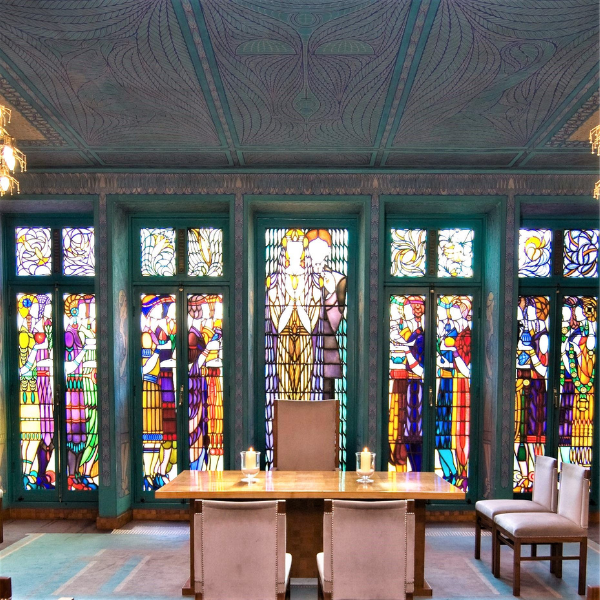 |
Located between two historical canals in the heart of the Dutch capital city, Sofitel Legend The Grand Amsterdam boasts a rich history and beautiful ceilings. One of the showstopping elements at this hotel is the Council Chamber, which opened in 1926 when Sofitel Legend The Grand Amsterdam was still serving as the city hall of Amsterdam. The visionary behind the Council Chamber’s design was W. Penaat. He saw the Council Chamber as one joint work of art; all its parts based upon one and the same idea, executed by several artists under his direction. A highlight of the Council Chamber is the unique wooden ceiling with its matte glass bowl chandeliers, which were designed by the artist Frits Lensvelt. Upon leaving the Council Chamber, hotel guests experience the Marriage Chamber. Designed by Chris Lebeau (1878-1945), the painted walls and ceiling are decorated with images and motifs to symbolize the story of romantic love, told through unique color combinations of light green, olive green, turquoise and purple with touches of orange and gold. The ceiling, decorated in the same colors as the walls, is a part of the artwork and represents zodiac signs. A scale on the ceiling, beneath which are placed two chairs for a bride and groom, represents balance in marriage. Sofitel Legend The Grand Amsterdam was inducted into Historic Hotels Worldwide in 2018. |
Florence, Italy
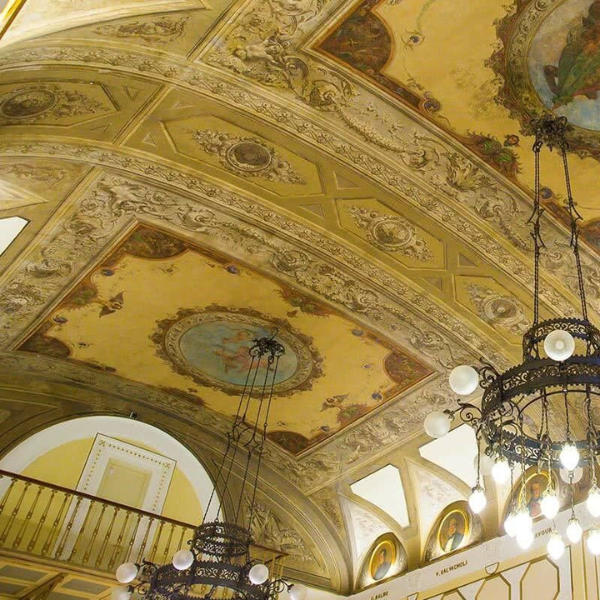 |
Bernini Palace Hotel resides in Florence, Italy’s historic downtown core, a UNESCO World Heritage Site. This historic hotel dates to the 16th century when it was built to serve as the regal palace of the influential Pera family. A new group of owners converted the building into an upscale hotel decades later. The hotel’s prestigious reputation remained well intact, especially once Florence briefly assumed the role of national capital amid the Unification of Italy in the 19th century. Italian statesmen met within an ornately frescoed venue inside the hotel, which soon became known as the “Sala Parlamento,” or “Parliament Hall.” The hotel’s proprietors then commissioned more artwork to appear throughout the space during the period, which focused on the major historical figures responsible for uniting the Italian Peninsula. Among the most prolific individuals to debut upon the walls of the Sala Parlamento were Giuseppe Montanelli, Vincent Salvagnoli, Manfredo Fanti, and of course, Giuseppe Garibaldi. The Sala Parlamento has since remained a central fixture in the Bernini Palace Hotel. Bernini Palace Hotel was inducted into Historic Hotels Worldwide in 2016. |
Chailly-sur-Armançon, Burgundy, France
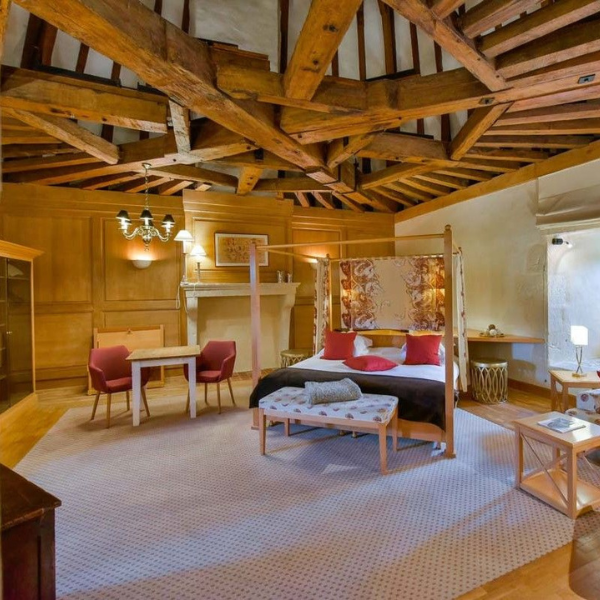 |
Once a fortified castle during the Hundred Years’ War, Château de Chailly in Burgundy, France, has primarily served as a regal palace for many centuries thereafter, passing through the ownership of various royal families and other private owners before it was transformed into a resort hotel in 1990. Throughout Hôtel Golf Château de Chailly’s public areas and guestrooms, exposed wood beams and high ceilings show the architectural heritage of the historic hotel. In the Castle Suites n°1 and n°5, roughly hewn, lacquered beams form a canopy between the living space of the room and interior peaks of the château’s iconic French Renaissance towers. In the dining rooms and sports bar, more refined wood beams support the ceiling over guests as they enjoy dinner and drinks. A more colorful ceiling can be experienced under the “Dôme du Cosmos” at Hôtel Golf Château de Chailly. Operating as a chapel, this space is also an art piece with magnificent mosaics made of 250,000 tiles of multicolored glass on the walls, floor, and ceiling. Beneath the lacquered wood ceiling of the chapel, above the central tiled altar, hangs a palette of golden orbs painted against deep blue sky and pale-yellow swirls of light. Hôtel Golf Château de Chailly, inducted into Historic Hotels Worldwide in 2022, dates to the 16th century. The building is designated a National Monument by the French Ministry of Culture. |
Angoulême, France
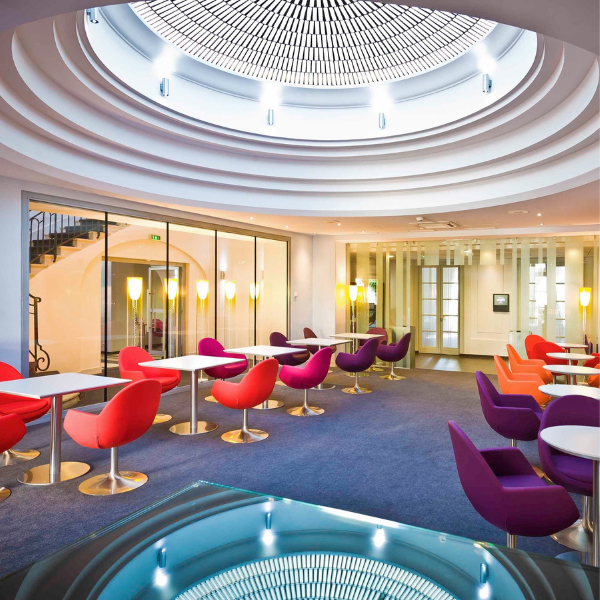 |
The illustrious history of the Mercure Angoulême Hôtel de France dates to the late 16th century when Guillaume Guez—Mayor of Angoulême—constructed the building as a symbol of his wealth and success. When it was transformed into a luxury hotel in the 21st century, beautiful ceiling features were added to complement the historic building with modern aesthetics. There are two ceilings that beg guests to look up at Mercure Angoulême Hôtel de France. The first is in the dining room at Les Jardins Des Arceaux: a bright-white, modern Art Deco dome, illuminated around the edges. The room, which is located near the lobby, gives guests a sense of lightness through the open panes of its centered glass ceiling dome. The hotel’s second feature is a ceiling mural that covers the long length of a common area room. The artwork depicts a classical scene overlaid with contemporary Pop Art touches, surrounded by recessed lighting. Mercure Angoulême Hôtel de France, inducted into Historic Hotels Worldwide in 2019, dates to the late 1500s. |
Oaxaca, Mexico
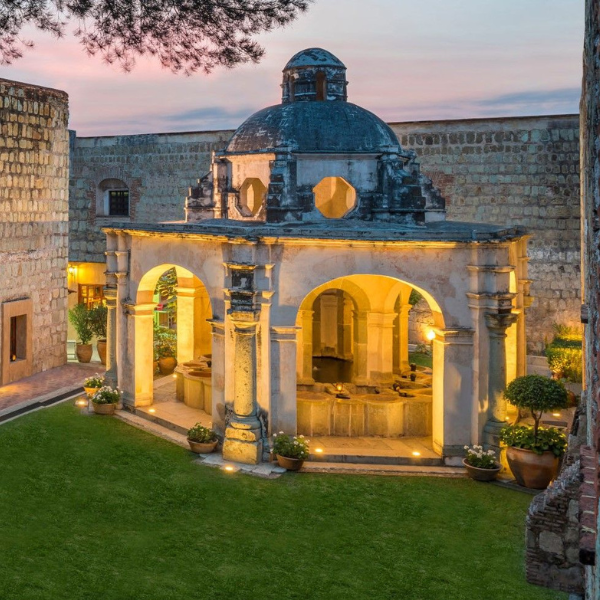 |
Built in 1576, Quinta Real Oaxaca was originally the Convent of Santa Catalina de Siena. In the 1970s, the building was carefully restored to its original appearance, including its famous frescoes and historic tile floors, and reopened to the public as a hotel. The National Institute of Anthropology and History (INAH) supervised the interior decoration. Teams of experts restored the frescoes that adorned the ancient walls. One of the most historic features of the hotel is the domed Los Lavaderos (The Washtubs) building, located on the northwestern corner of the grounds and surrounded by the hotel’s outstanding gardens. This ornate, free-standing, open-air Spanish Colonial gazebo was where the convent’s nuns once did their laundry. Under the historic dome, water flows from the center of an octagonal fountain into twelve basins, never overflowing. It is considered to be one of the region’s most ingenious hydraulic systems of its colonial era. This destination hotel resides within the historic city center of Oaxaca de Juárez, which UNESCO designated a World Heritage Site in 1987. Quinta Real Oaxaca was inducted into Historic Hotels Worldwide in 2012. |
Amsterdam, Netherlands
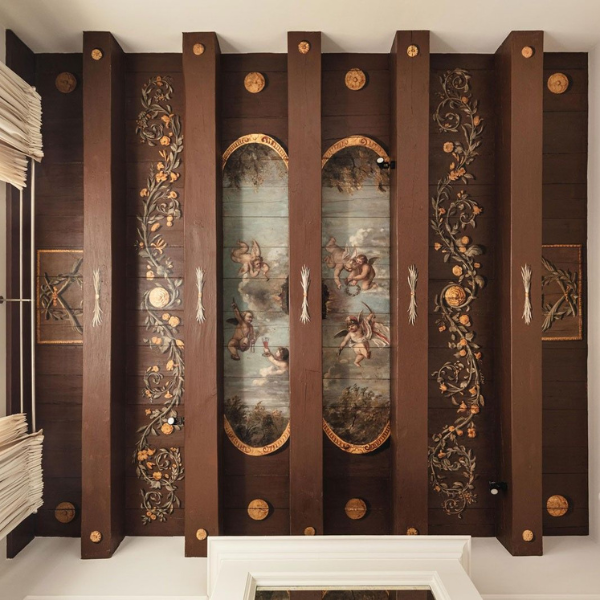 |
Nestled next to the Herengracht—a designated UNESCO World Heritage Site—today’s luxurious Waldorf Astoria Amsterdam occupies six monumental townhouses originally known as Herengracht 442-556. Dating to the Dutch Golden Age in the 17th century, they all display a blend of beautiful architectural styles and preserved ceiling features. In 2014, new owners acquired the six gorgeous edifices at Herengracht 442-556. A talented group of architects then worked to transform the structures into a marvelous 93-room hotel called the “Waldorf Astoria Amsterdam.” The team endeavored to protect the amazing architectural heritage that defined each one of the historic homes, preserving their stunning marblework, ceilings frescos, and Rococo-inspired wall carvings. One of the most magnificent ceiling features of the hotel is the painted wooden beams of the Brentano Suite. Originally a family home in 1753 occupied by Josephus Brentano, the Brentano Suite features a hand-painted classical fresco with two panels depicting cherubs raising a sword, lifting a wine glass, bearing a laurel wreath, and blowing a trumpet. Gold and cream laurel wreaths and floral vine motifs, set against dark wood, surround the cherubs. Waldorf Astoria Amsterdam was inducted into Historic Hotels Worldwide in 2018. |
Augsburg, Germany
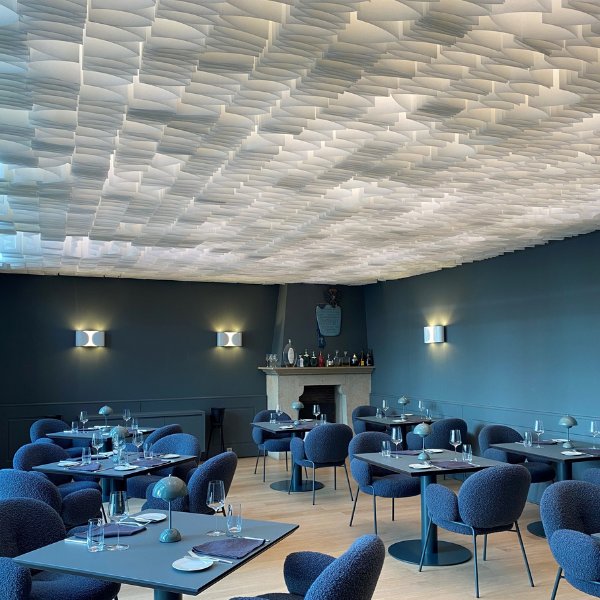 |
With a history reaching back over 300 years, Hotel Maximilian's is located directly on the Maximilianstraße in the middle of Augsburg. While the historical record of Hotel Maximilian’s dates to the 15th century, the current iteration of the building was constructed in the early 1700s. Architect Johann Baptist Gunezrhainer, the court mason for the Duchy of Bavaria, converted the entire space into a brilliant guesthouse and masterfully recrafted the hotel’s appearance in the regal style of Rococo architecture. Within the hotel, two magnificent modern ceiling features stand out: the glass dome in the ballroom and the paper ceiling that hangs above the hotel’s Sartory Restaurant. The ballroom’s glass dome forms a pine nut, the emblem of Augsburg. The pine nut was once the emblem of the Roman legion that camped at the confluence of the Lech and Wertach rivers in Augsburg. The pine nut was considered a symbol of fertility by the Romans and can be found in many places in the Augsburg city area, adorning historic buildings, either painted, sculpted, or cast in metal. Large copper pine nuts sit on the two gable ends of Augsburg's town hall. Entering the Sartory Restaurant, guests not only can enjoy a meal worthy of a Michelin Star but also bask in the beauty of the unique paper ceiling. This rare type of decoration makes guests feel as if they are floating on a cloud during their meal and conveys a sense of light and ethereal warmth. Hotel Maximilian's was inducted into Historic Hotels Worldwide in 2019. |
Jhunjhunu, India
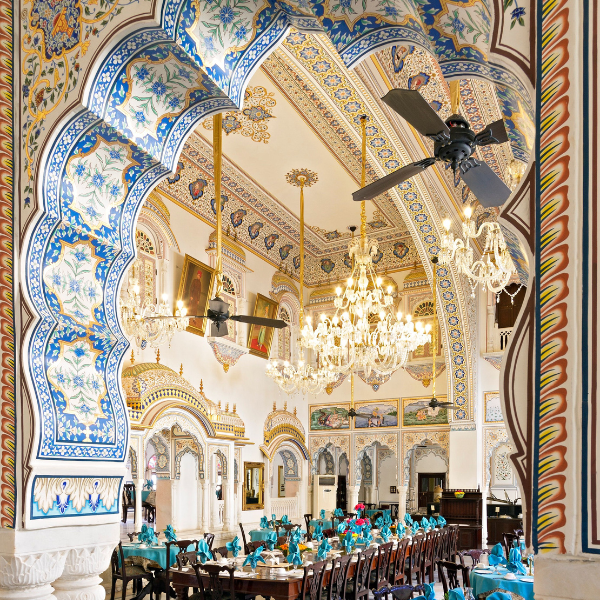 |
Overlooking the ancient city of Jhunjhunu is the charming Alsisar Mahal, a former palace with deep historical connections to the surrounding Shekhawati region. The estate was founded by Samrath Singhji in the mid-18th century. Singhji hailed from a long lineage of prominent Rajput rulers known as the Alsisar family and his new palace served as the main seat of power for his own domain, the Thakur of Alsisar. The Alsisar family had also constructed an extensive variety of rich Indo-Islamic architectural details throughout the palace, where ceilings reflect the occupants’ artistic values and impressive heritage. Now a hotel, the Alsisar Mahal continues to showcase those fantastic elements well into the present, even after the Alsisar family imaginatively converted the entire structure into a stunning hotel in the early 21st century. Upon arriving at the magnificent hotel, a massive arched gateway guides guests into the stunning interior. The ceiling here displays an amazing array of beautiful ceiling frescos, intricate wall carvings, and ornate gold-leaf detailing. The masterful construction can be seen on the exterior, too, where visitors can marvel at its gorgeous domes and distinctive geometric patterns. Indeed, few other vacation destinations in India embody such an impressive architectural heritage as the Alsisar Mahal. Alsisar Mahal was inducted into Historic Hotels Worldwide in 2012 and dates to 1737. |
Bagac, Philippines
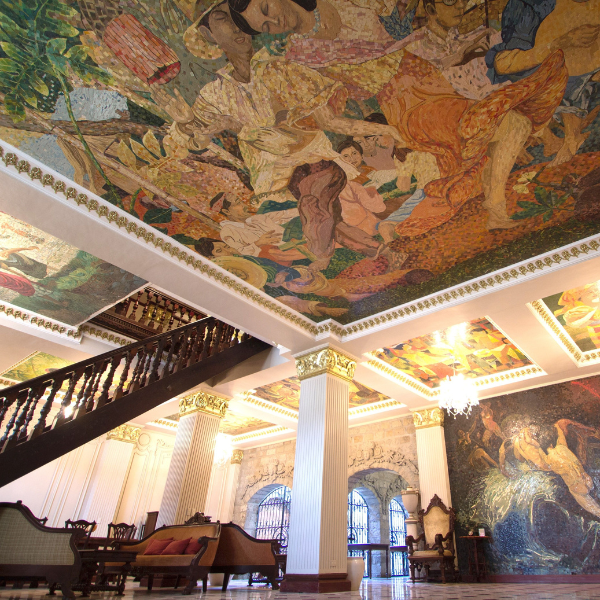 |
Casa Byzantina, a Bahay na Bato or House of Stone, at the historic Las Casas Filipinas de Acuzar resort in Bagac, Philippines, was originally built in 1890 in Binondo, Manila by Don Lorenzo Del Rosario. The mosaic inside the House of Stone boasts replicas of paintings of Filipino artists such as Botong Francisco (“Pista sa Nayon”), Fernando Amorsolo (“Mango Harvest”), Vicente Manansala (“At the Market”), and Anita Magsaysay. The House of Stone was preserved and transferred to Las Casas Filipinas de Acuzar in Bagac, Bataan where it can now be visited—alongside other Filipino marvels—by curious guests of today. A peek into the artisan workshops at Las Casas Filipinas de Acuzar shows guests the source of all the resort’s unique furnishings and details. Everything seen within the spacious resort was made in-house, from the tiles, bricks, sculptures, murals, art works, and even its furniture pieces. Las Casas Filipinas de Acuzar prides itself in housing the most skilled and talented group of artists and craftspeople hailing from different regions across the Philippines, each bringing their own distinct style and technique to the special resort. Las Casas Filipinas de Acuzar’s most historic casa dates to 1780 and the historic resort was inducted into Historic Hotels Worldwide in 2017. |
Sintra, Portugal
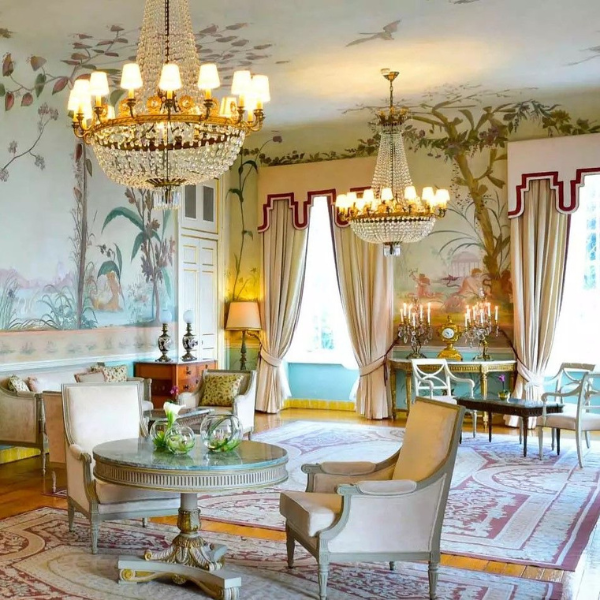 |
Located in Sintra, Portugal—a town classified as a World Heritage Site by UNESCO—the Tivoli Palácio de Seteais is a magnificent example of 18th-century Neoclassical architecture. Founded in 1787 as a luxury palace for the Dutch consulate and inducted into Historic Hotels Worldwide in 2016, the hotel offers guests opportunities to look up at several dreamy neoclassical frescoes. The first guests will see is the one on the ceiling of the palace hotel’s “Salão Nobre” (Great Hall), which is original to the 18th century. The artist of this fresco is unknown, but it was inspired by the work of French artist Jean Baptiste Pillement, who is believed to have painted the fresco in the hotel’s Pillement Room. The fresco in the Royal Room is also original from the palace’s construction in the 18th century by the Portuguese architect José da Costa e Silva. This room reflects the romanticism of Sintra and tells a love story in the frescoes above. |
Lviv, Ukraine
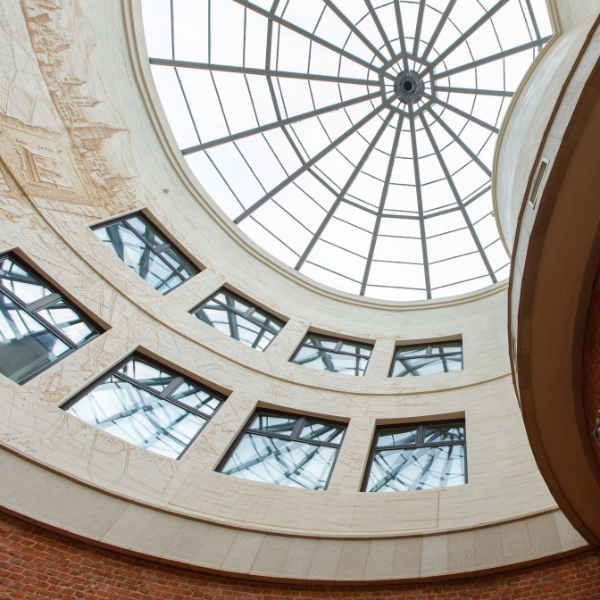 |
The historic Citadel Inn Hotel & Resort in Lviv, Ukraine opened its doors as a hotel in 2009. The hotel is housed in the circular Maximilian Tower No. 2, which was part of a fortification complex known as the Citadel. The former military structure was built in the 1850s and was intended to control the city of Lviv and protect it from enemies. Surviving the European wars of the 19th and 20th centuries, private owners leased Maximilian Tower No. 2 in 2004 with the goal of transforming this military building into a destination for relaxation and beauty, not war. One of the brilliant examples of this idea is the paintings on the walls of cannons, which depict them shooting seeds from which flowers sprout instead of cannonballs raining terror. The architect of the reconstruction project was Semen Tsimbalyuk and the painter was Oleksandr Trofimyuk. They transformed an open courtyard at the center of the tower into an enclosed guest space in an incredible 394-ft hall, capped by a massive 492-ft transparent dome. Guests can see sunlight, stars, and the sky through the ceiling. The walls beneath the dome are covered with artistic paintings of maps of Lviv from the Austrian archives. When the hotel reopens to the public, a historical exhibition will be available in the library, as will a guide who will acquaint the guests with the uniqueness of this place, and talk about the style, architecture, and historical events. Citadel Inn Hotel & Resort was inducted into Historic Hotels Worldwide in 2013. |
Dunblane, Scotland
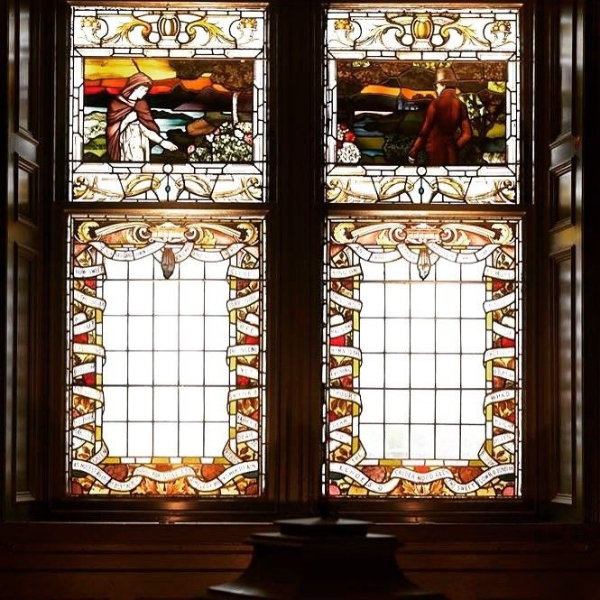 |
Originally a Victorian health spa resort, the DoubleTree by Hilton Hotel Dunblane Hydro opened in the Victorian Era for guests who came to bucolic Dunblane, Scotland to drink the local spring water, as well as to experience the beautiful countryside, fresh air, and outdoor activities. DoubleTree by Hilton Hotel Dunblane Hydro was inducted into Historic Hotels Worldwide in 2018. The hotel’s beautiful pastoral setting inspired "Jessie the Flow’r o’ Dunblane,” an 18th-century Scottish love song by Robert Tannahill and a section of the hotel’s ceiling offers guests a peek into this local cultural touchpoint. As guests make their way down the stairs from reception, they should look up to see two large stained-glass windows. These panes were installed around the time the hotel first opened in 1878. The left side pane depicts Jessie, a young woman who is turning toward the viewer’s right and reaching for flowers, basked in a red glow as the sun sets behind a mountain. The right-side pane depicts a man, perhaps the voice of the song, turning left toward Jessie. Not a ceiling per se, but a magnificent reason to “look up” at this historic hotel. These are the lyrics of the original song by Tannahill: “Jessie the Flow’r o’ Dunblane”
|
Québec City, Canada
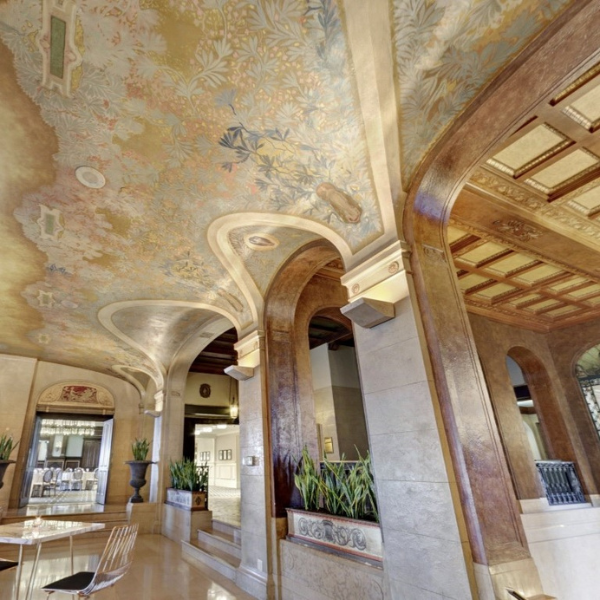 |
While several ceilings should be considered magnificent at Québec City, Canada’s famous Fairmont Le Château Frontenac, Le Verchères room stands out. Originally called the Palm Room, this space is ideal for cocktail receptions and was once the hotel’s formal tearoom. The golden ceiling of Le Verchères room was painted by the Parisian artist Raoul Barbin, based on a design by architect William Maxwell. Barbin taught decorative arts in Quebec at the time he worked on the hotel’s ceiling, which dates to 1924. The design is a sumptuous blend of Art Nouveau and Neoclassical influences, showing off a leaves-and-flowering-vine design embellished with cartouches and monochrome motifs. The palette includes shades of blue, pink, and green against a yellow-gold background. Palm designs are visible on top of each column. Le Verchères is located between the Ballroom and the Frontenac Room, with windows providing natural light and a view of the Place d’Armes park. Designated a United Nations World Heritage site, this stately luxury hotel stands above historic Old Québec. Fairmont Le Château Frontenac was inducted into Historic Hotels Worldwide in 2012. |
Paris, France
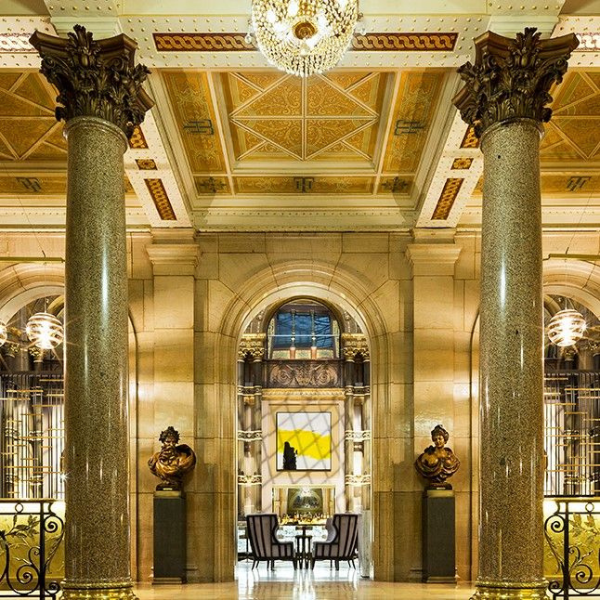 |
The Hilton Paris Opera opened on May 7, 1889, during the World’s Fair in Paris, France. Initially named Hotel Terminus, it was built by architect Juste Lisch and designed to accommodate transatlantic travelers arriving from Normandy via the Saint-Lazare station. Upon entering the historic hotel through its grand lobby today, visitors marvel at the Second Empire Style décor and opulent gold, cream, and burgundy ceiling. The ceiling was designed with neoclassical and Second Empire influences: geometric perfection interspersed with the lavish floral and ribbon motifs popular during the 19th century. The ceiling’s warmth is complimented by soft green accents. The letters “H” and “T” are overlain in a logo that appears throughout the design, harkening back to the days when the hotel was known as Hotel Terminus. Paintings and sculptures by the artist Charles Joseph Lameire (1832-1910) adorn the ground level and walls. Farther into the hotel, the Grand Salon’s magnificent glass ceiling and chandeliers continue to give visitors reasons to look up. Several French movies were filmed with this magnificent backdrop over the years since the hotel debuted. Hilton Paris Opera was inducted into Historic Hotels Worldwide in 2018. |
Budapest, Hungary
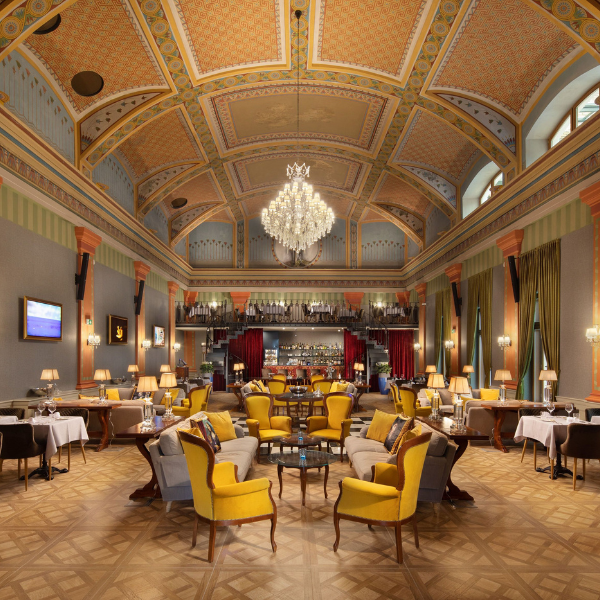 |
The magnificent Egyptian Revival vaulted ceiling at The Great Hall Restaurant and Lounge at Mystery Hotel Budapest in Budapest, Hungary, is another playful part of this upscale “mystery” hotel. It brings the Nile to Budapest, with its leafy greens, watery blues, rich ochre, and sunny yellow in classical Egyptian motifs of reeds and fans, and other ancient Greek motifs. Full of optical illusions and mysterious aesthetics, the boutique hotel embraces its history as the official meeting space for the Symbolic Grand Lodge of Hungary, a merger of The Freemasonry of the Order of John in Hungary and the Nagyoriens of Scottish Rite. In 1896, they opened their new club building to host Freemasons, who enjoyed the space until the rise of the Hungarian Soviet Republic. This beautiful historic building finally underwent a masterful transformation into an upscale boutique hotel known as the “Mystery Hotel Budapest” in 2019. Zoltán Varró spearheaded the subsequent design work, which endeavored to highlight as much of the building’s historic architecture as possible. In fact, the renovations instituted Corinth, Ion, and Doric-inspired motifs as a way to draw upon the erstwhile masonic lodge’s preexisting Neoclassical character. Mystery Hotel Budapest was inducted into Historic Hotels Worldwide in 2021. |
Toronto, Canada
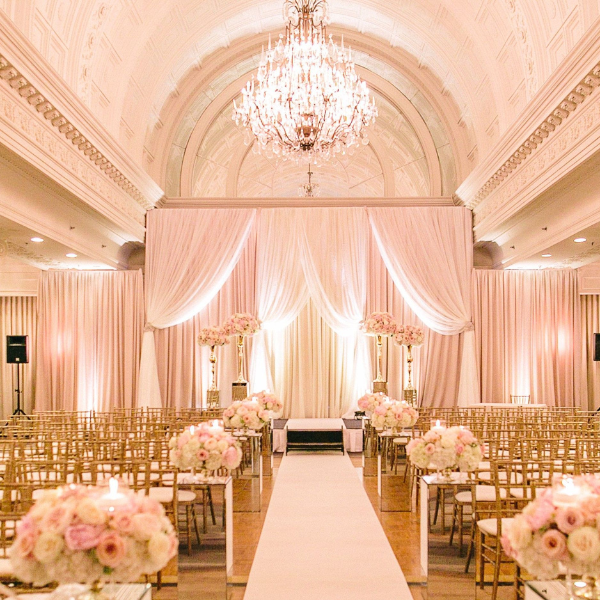 |
Located in downtown Toronto, the Omni King Edward has been a cherished local landmark since it debuted in 1903. Local entrepreneur George Gooderham hired two talented architects to craft the hotel’s distinctive appearance, Henry Ives Cobb and E.J. Lennox. Their distinct designs were particularly noticeable inside the hotel, especially within its stunning Sovereign Ballroom. Consisting of brilliant wall decorations, floor-to-ceiling windows, and 24-foot-high ornate ceilings, the space immediately became one of the area’s most sought-after meeting venues. Indeed, the amazing architectural character helped the hotel establish a venerable reputation that soon reached an international audience. This immense popularity even led to the hotel undergoing a massive expansion during the early 1920s, which resulted in the creation of a towering, 18-story wing. The construction nearly doubled the number of available guestrooms, while also installing several new outstanding facilities. Perhaps the greatest of those spaces to open was another event venue, the Crystal Ballroom. Named after the beautiful chandeliers that hung from its ceiling, the Crystal Ballroom features a stunning wealth of architectural features including beautiful, coffered ceilings. Omni King Edward was inducted into Historic Hotels Worldwide in 2013. |
Genoa, Italy
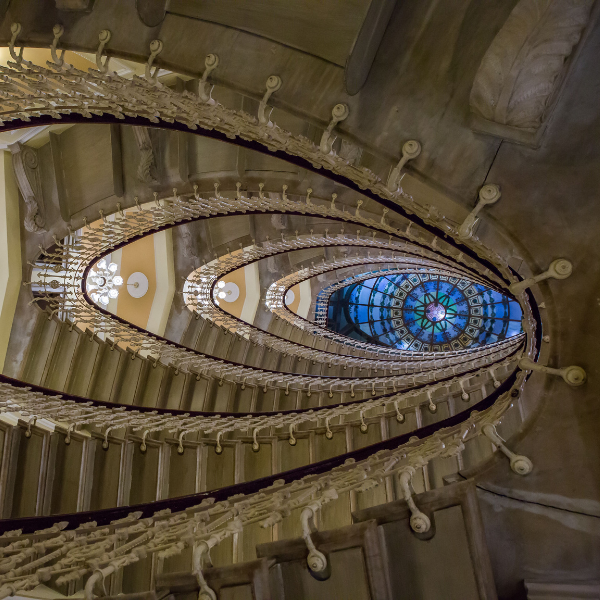 |
When Hotel Bristol Palace opened in 1905 on one of Genoa, Italy's finest thoroughfares, it mesmerized its first visitors with its brilliant take on Art Nouveau architecture. Beautiful marble awaited guests as they stepped inside, as did outstanding woodwork and ornate moldings. Perhaps the most memorable feature since its establishment is the breathtaking elliptical staircase that ascends every floor of the hotel. This famous staircase is not a single ceiling but a layered maze of stairs that extend above anyone who dares to look up. The elliptical and white Art Nouveau staircase gives viewers a mesmerizing optical perspective. Those who dare to gaze up from the bottom are treated to the impression that the colorful stained-glass dome at the very top floor is a blue and violet iris looking down on them from within the white oval atrium. One of the most influential people to travel to the Hotel Bristol Palace was famed British filmmaker Alfred Hitchcock. Some film historians speculate that this grand staircase helped contribute to the theme set in his 1958 psychological thriller, Vertigo. Hotel Bristol Palace was inducted into Historic Hotels Worldwide in 2022. |
London, England
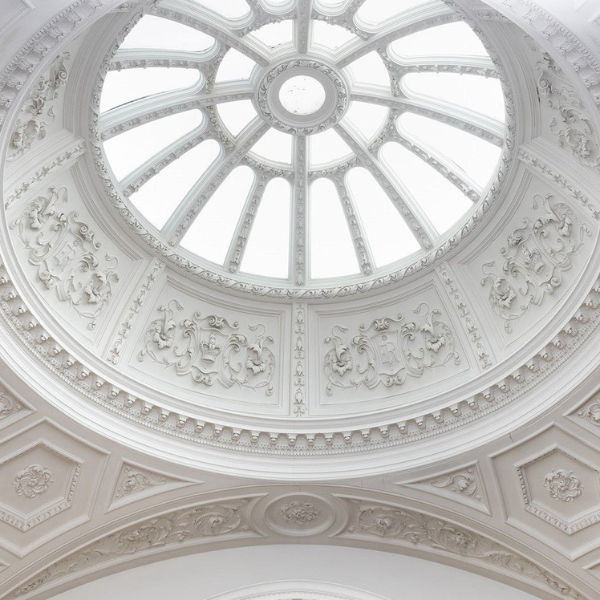 |
Entering Raffles London at The OWO evokes the same feeling as entering a grand opera house, or a spacious palace. The marble staircase draws guests in to explore the unique space, with beams of light beckoning one to look up, at the magnificent glass ceiling dome. Completed in 1906, the Old War Office (The OWO) is one of the great London landmarks of the Edwardian Age. At the time of its construction, it served as an architectural expression of British power, confidence, and wealth in the early 20th century. This is principally reflected in its monumental scale and sculptural detailing of the magnificent historic ceiling dome and ornamental plaster work. During a recent restoration, extensive surveys of the building's elaborate ceilings were conducted, and “new-to-match” moldings were installed where necessary. As one of Europe’s largest renovation projects, it marks a revelatory transition from war to peace, as a once-secret government building opens its doors to the public for the first time as a luxury hotel, Raffles London at The OWO. The public enters through its magnificent two-story entrance hall, with a groined ceiling and Portland stone columns. At the center, the iconic triple-height ceiling dome features moldings of the Tudor crown, which was a royal cypher used widely from 1901-1953. The design, too, features King Edward’s own royal cypher, “ER” (Edward Rex). Raffles London at The OWO was inducted into Historic Hotels Worldwide in 2023. |
Victoria, British Columbia, Canada
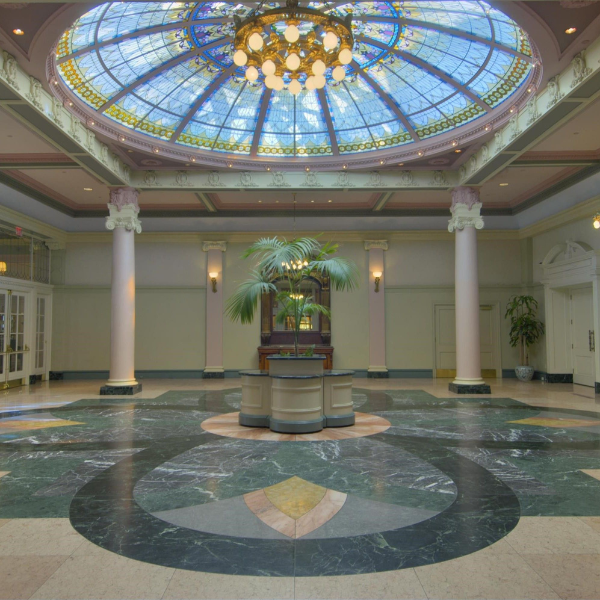 |
The magnificent Tiffany-style stained glass domed ceiling in the Fairmont Empress’ Palm Court was designed to be a stylish ceiling beneath which guests would enjoy Afternoon Tea. Opened in 1908, this gorgeous hotel was designed by Francis Rattenbury and overlooks the Victoria Harbour, Canada. However, soon after completion, it was discovered that the acoustics under the Palm Court’s dome were so sensitive, that if one whispers on one side of the room, the conversation can be picked up on the other side. Tea was relocated to the hotel lobby (now the Lobby Lounge) but the beautiful dome remained. In 1967, a severe snowstorm shattered the stained glass dome beyond repair and the entire ceiling was covered over with a false ceiling and forgotten for over 20 years. In 1988–89, an extensive $45-million restoration was undertaken to improve the hotel’s original craftsmanship. The original glass dome was discovered and the Palm Court ceiling was restored. Some portions of it were reconstructed using historic photographs and an original piece of glass found in a nearby shop. A second outer dome was added to protect the stained glass art below it from future harm. The dome at the Fairmont Empress Hotel is an awe-inspiring piece of delicate work and admired by guests who enjoy Afternoon Tea in the nearby elegant Lobby Lounge. The glass dome never has the same colors; the colors of the dome change dependent on the weather. The Palm Court provides an air of elegance to events, showcasing the magnificent history of the Empress. Fairmont Empress was inducted into Historic Hotels Worldwide in 2018. |
Tremezzo, Italy
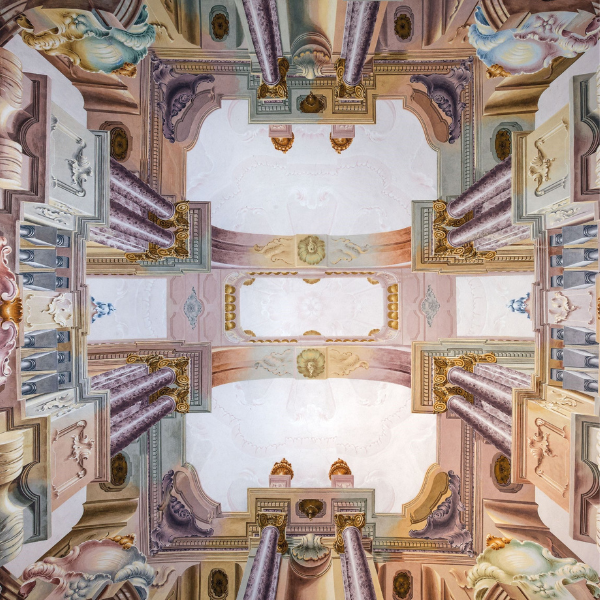 |
Immersed in the beauty of Lake Como, the historic Grand Hotel Tremezzo is a treasured example of the finest authentic Italian palaces and dates to 1910. When Enea Gandola and his wife, Maria Orsolini Bolla, decided to establish one of the Grande Dames of Europe in the early 20th century, they hired architect Constantino Ferrario to head the project. Gandolas also added many distinct features into the villa’s interior. Perhaps the greatest of these architectural elements were the many frescoes that still cover the hotel’s grand ceiling. Painted by Francesco Congeliani, the frescoes depict scenes of Virgil’s Aeneid as well as that of heaven. Congeliani himself was the pupil of Giambattista Tiepolo, who was well-known across the continent for his work throughout the Mediterranean and Germany. Grand Hotel Tremezzo was inducted into Historic Hotels Worldwide in 2011. |
Yokohama, Japan
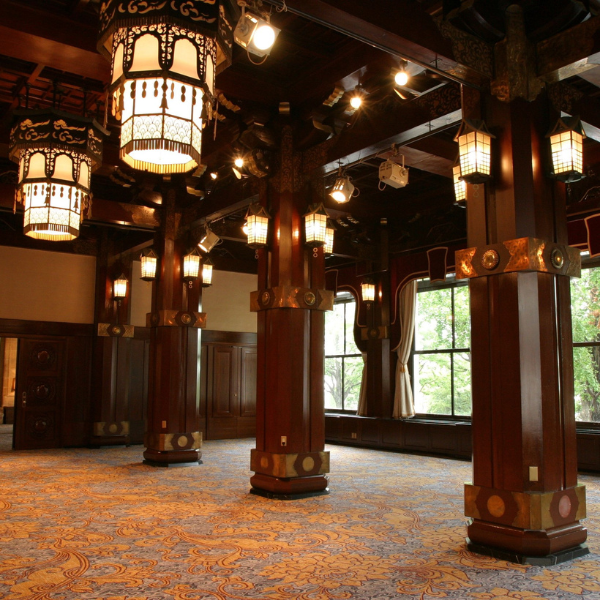 |
When guests enter Hotel New Grand through its historic main entrance and walk up its grand staircase to the second-floor lobby, they experience a majestic blend of European Art Deco and traditional Japanese architecture. The foyer has an ornate white plaster, detailed with motifs modeled after ancient Indian art. Storytelling silk tapestries—works of art— hung on the upper walls contrast with the white plaster and patterned, washi paper lanterns hang from the ornate ceiling. Further into the historic hotel, two more magnificent ceilings offer beautiful spaces for events: the Rainbow Room and the Phoenix Room. The stucco ceiling (273 square meters) of the Rainbow Ballroom banquet hall has been widely acclaimed for its plaster work. The rainbow-like arched ceiling is adorned with classic decorations that are said to be the pinnacle of stucco work. The trailing clouds and lotus flowers often seen in traditional temples and shrines recall the Buddhist paintings of "Gokuraku Jodo-Land of Bliss." Finally, the Phoenix Room’s dark wood-coffered ceiling is very different from the white plaster designs but just as enchanting. This room’s canopy exudes a dignified atmosphere with crossbeams and large ornate lanterns, reflecting the aesthetic of ancient Japanese shrines and temples. Designed by architect Jin Watanabe, Hotel New Grand is a certified historic architecture by the city of Yokohama and a modern industrial heritage site by the Ministry of Economy Trade and Industry. Watanabe subsequently designed numerous historical buildings including the Tokyo National Museum in Ueno, Tokyo, and Dai-ichi Seimei building in Hibiya, Tokyo. The hotel offers a special package with historical tours of the building. Hotel New Grand was inducted into Historic Hotels Worldwide in 2012. |
Singapore
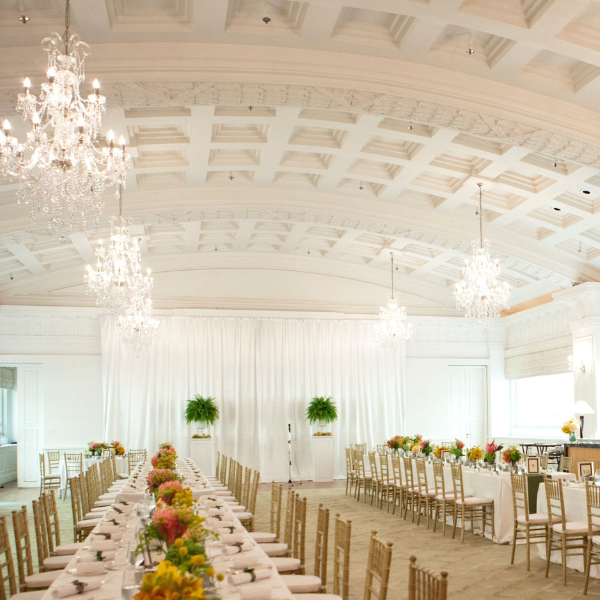 |
Built in 1928, the original Fullerton Building resides in a historic location in the heart of Singapore’s Central Business District. Named after Robert Fullerton—the first colonial governor of Singapore—The Fullerton Hotel Singapore began life as an ornate post office. Located on the fourth floor of the hotel is Singapore’s 71st National Monument. The Straits Room is known as an exclusive enclave distinctly well-appointed for formal banquets, private receptions, seminars, and press conferences. Previously used as the billiard room of the prestigious Singapore Club, its lofty height, unique coffered ceiling and crystal chandeliers are simply magnificent. Both the ceiling and wall motifs are original design elements from 1928 that were retained when the magnificent Fullerton Building was restored in 1997 into a luxury hotel. The ceiling is 90 years old and was sculpted by Cavaliere Rudolfo Nolli, an Italian sculptor and architect from Lombardy, who worked mainly in Southeast Asia during the first half of the 20th century. The Fullerton Hotel Singapore was inducted into Historic Hotels Worldwide in 2011. |
Toronto, Canada
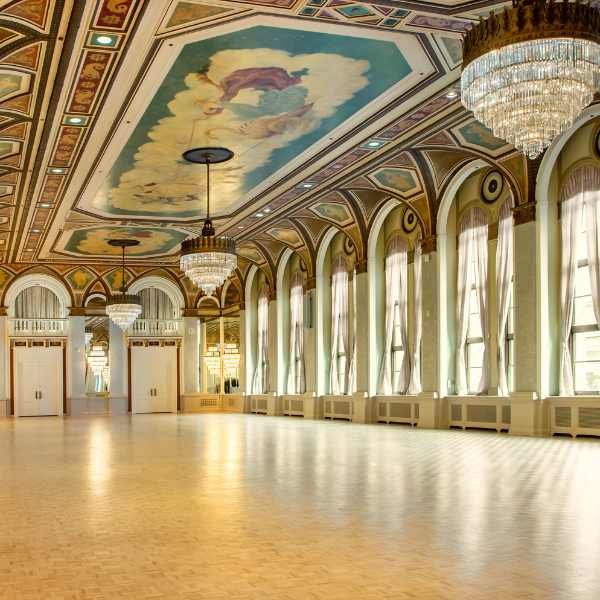 |
The preservation of Fairmont Royal York, one of Canada's most iconic and enduring properties, is a responsibility the hotel team have treated with care, dedication, and great respect. The architectural style of Fairmont Royal York followed the dominating trend in contemporary North American architecture, dubbed "Modern Classicism" by architect-writer Robert Stern. Its style emerged from early 20th-century avant-garde European architecture, French Beaux-Arts planning and composition, and the buildings of the Exposition des Arts Decoratifs et Industriels held in Paris in 1925. The showstopping Ballroom at the Fairmont Royal York is one of the most photographed rooms in Toronto and was a setting in a variety of films, including The Killing Fields (1984) and Cinderella Man (2005). The design and installation of the Ballroom’s 25-ft high ceiling mural is original from 1929 and designed by Edward and William Maxwell. The Ballroom shows an Italian influence in its colors, materials, and oil paintings inspired by mythological themes. The spectacular ceiling shows Venus on her swan chariot drawn by bulls and accompanied by a dove, originally hand painted on canvas then attached to the ceiling and sealed with lacquer. This center panel is flanked by two smaller ones depicting a goddess and unicorn and a goddess with Pegasus. Guests today can visit the Canadian landmark and see for themselves this magnificent ceiling. The Fairmont Royal York was inducted into Historic Hotels Worldwide in 2018. |
Quebec, Canada
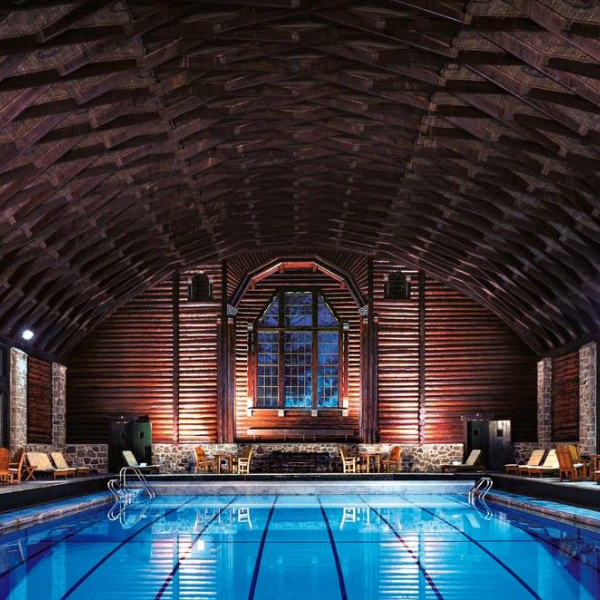 |
Fairmont Le Château Montebello was the dream of a Swiss-American named H.M. Saddlemire, who was inspired by the château of the Swiss Alps and dubbed the project “Lucerne-in-Québec.” In 1930, the massive cedar château was complete, with over 10,000 red cedar logs all cut and set by hand, contributing to three main buildings. While this luxury log cabin architecture adds drama to many of the luxury resort’s high ceilings, the pool building’s canopy is particularly stunning. The enclosed pool structure, built in 1931 and approximately 150 ft long by 91 ft wide, was constructed using the same roughhewn log construction but it features a coffered, hand-painted wooden ceiling. Artistic flair adds colorful motifs of sea horses, scorpions, and flowers in tones of burgundy, green and white above the pool. For 40 years after its completion in 1930, the log château was the private retreat of the Seigniory Club, whose elite membership included reputed Canadian businessmen and politicians such as former Prime Minister Lester B. Pearson, and foreign dignitaries such as Prince Rainier and Princess Grace of Monaco. In 1970, the resort opened its doors to the public and today all are invited to enjoy its rustic splendor. Fairmont Le Château Montebello was inducted into Historic Hotels Worldwide in 2018. |
“One of the best ways to distinguish a fine historic hotel from another older hotel is to look up at the ceilings. Look up and discover the tremendous detail, artistry, and craftsmanship in the historic ceilings,” said Lawrence P. Horwitz, Executive Vice President of Historic Hotels of America and Historic Hotels Worldwide. “The ceilings in public areas, including lobbies, ballrooms, and restaurants, range from stained glass to painted ornamental plaster. Often, these grand and detailed ceilings have been recognized as historically significant local or regional historic landmarks. We encourage everyone to visit their favorite historic hotel and to look up!”
Read more:
2023 Top 25 Historic Hotels Worldwide Afternoon Tea Experiences
The 2022 Top 25 Historic Hotels Worldwide Holiday Traditions and Spectacular Displays
2022 Top 25 Historic Hotels Worldwide Most Magnificent Art Collections
2022 Top 25 Historic Hotels Worldwide Most Historic Golf Courses List



















